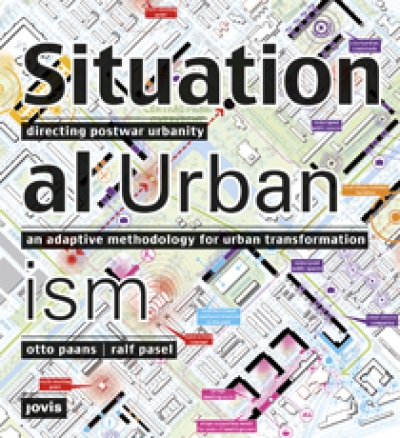
Situational Urbanism. Directing Postwar Urbanity
Situational Urbanism: Directing Postwar Urbanity: an Adaptive Methodology for Urban Transformation
Eine der wohl wichtigsten Herausforderungen für die europäischen Großstädte war und ist die Anpassung und Umgestaltung des städtischen Raums an die Bedürfnisse der jeweiligen Gegenwart. Diese Umwandlungsprozesse sind zwar hochkomplex, bieten aber auch vielfältigste Chancen, bereits existierende Mikroökonomien, Multikulturalität und Raumstrukturen vorteilhaft zu integrieren und zu nutzen. Der Situative Urbanismus ist eine adaptive Methode, die neue Wege im Umgang mit dem modernen städtischen Raum eröffnet. Um gelebte Stadterfahrung und die Notwendigkeit von Langzeitplanungen zu vereinen, werden in diesem Entwurfsansatz räumliche, sozio-ökonomische und kulturelle Belange gleichermaßen berücksichtigt. Der Band verbindet anwendbare Raumtheorie, innovative Analysemethoden und ein umfassendes Instrumentarium flexibler Entwurfsmethoden zur Umgestaltung des modernen städtischen Raums in allen Größenordnungen, vom Einfamilienhaus über den Wohnblock bis hin zum Stadtviertel. Und daraus ergibt sich eine Reihe von innovativen und vielseitig anwendbaren Entwurfsstrategien für die Gestaltung unserer Städte.
Transforming modernistic urban areas to fit contemporary needs is one of the predominant challenges that postwar European cities face today. Although these transformation processes are highly complex they generate a wide variety of chances to take advantage of existing micro-economies, cultural diversity and spatial structures. Situational Urbanism is an adaptive methodology that identifies new ways of dealing with modernistic urban areas. In order to synthesize the lived experience on the street with the need for long-term planning, this design approach addresses simultaneously spatial, socio-economic, and cultural issues. This results in a variety of innovative and versatile design strategies that deal with post-war urbanism. The volume combines applicable spatial theory, innovative analytical methods and a comprehensive toolkit of flexible design methods for transforming modernist urban areas, ranging over the full array of scales, from the individual house, via the block to the neighbourhood.

































































































